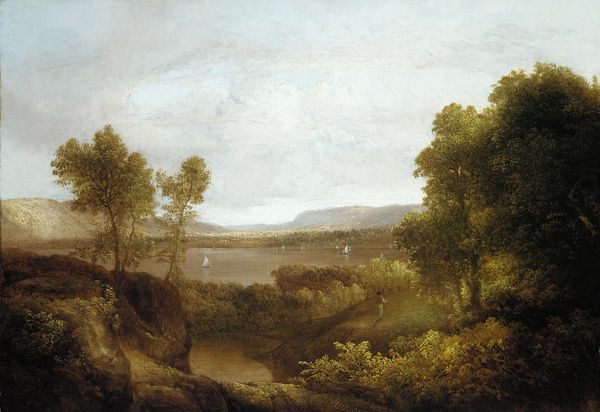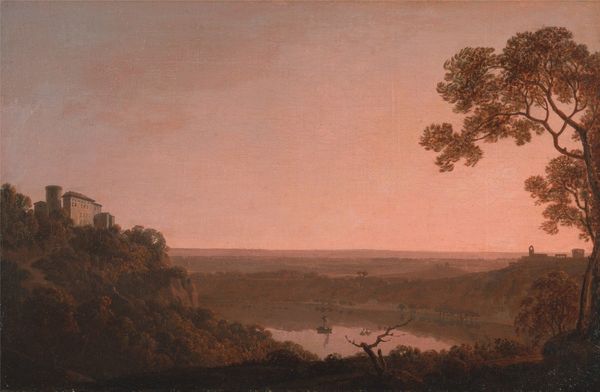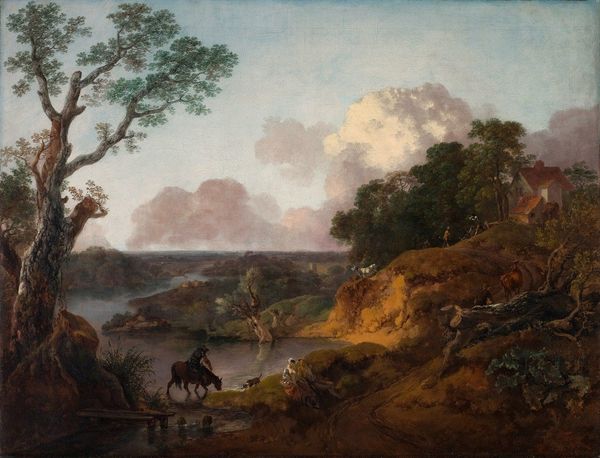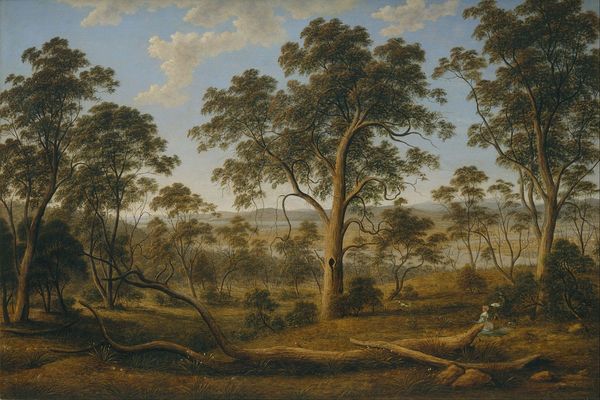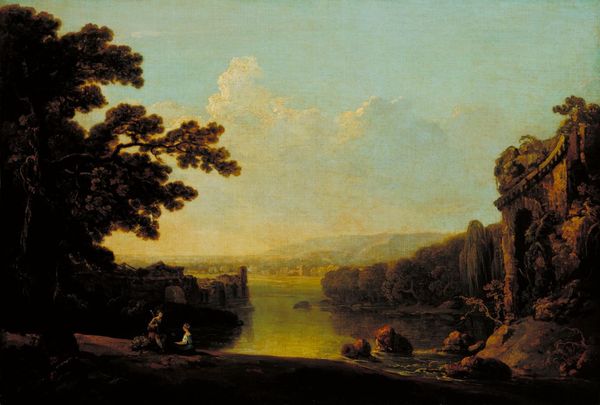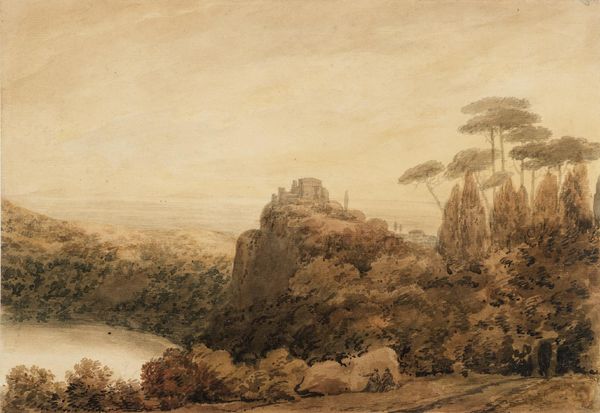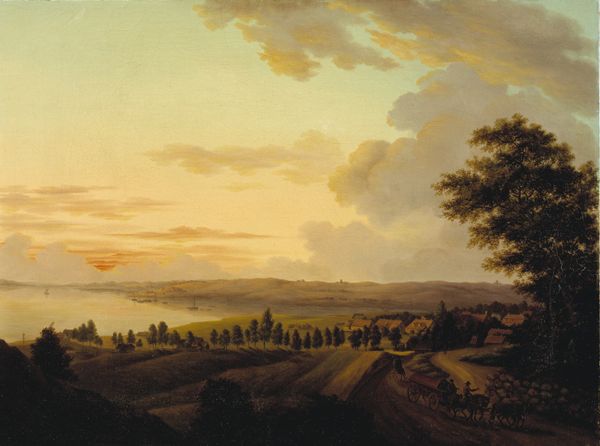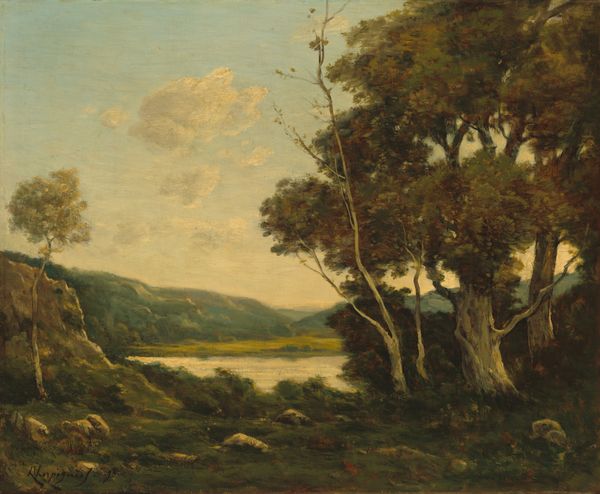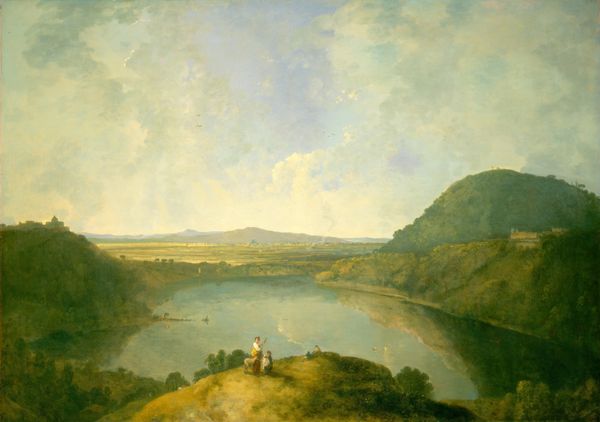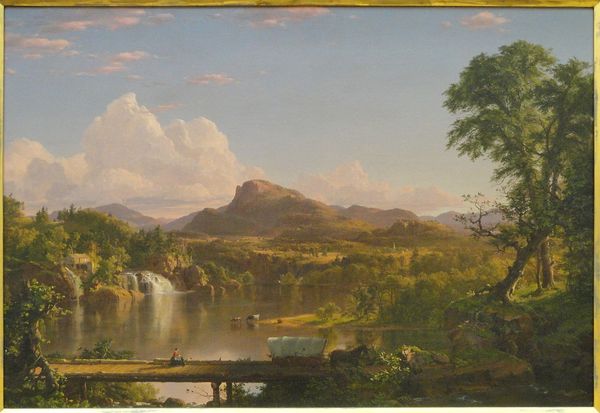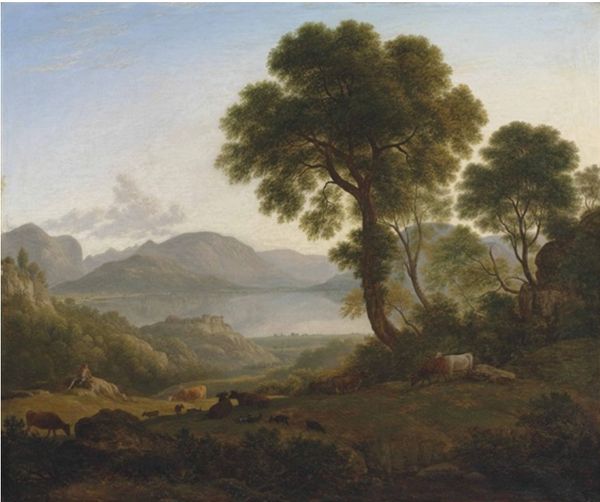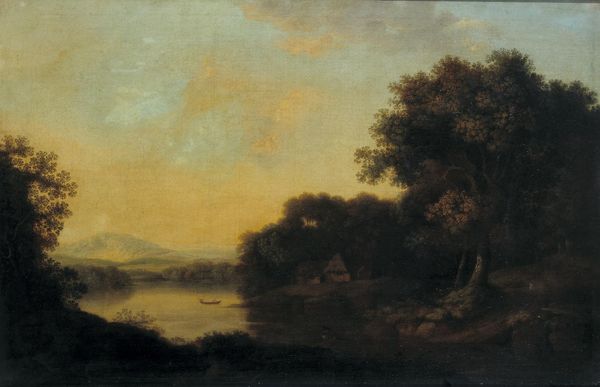
painting, oil-paint
#
painting
#
oil-paint
#
landscape
#
classical-realism
#
oil painting
#
romanticism
#
italian-renaissance
Copyright: Public Domain: Artvee
Curator: Here we have Joseph Wright of Derby's painting, "Lake Albano." Wright, though British, spent time in Italy and this work reflects his interest in the Italian landscape, as filtered through a particular artistic lens of his era. Curator: It strikes me as serene, almost melancholic. The muted colors and hazy light lend it a dreamlike quality. Look at the brushwork—very delicate. I'm curious what pigments he would have had available to achieve that soft, almost watercolor-like effect in oil paint. Curator: Precisely. It’s a romanticized vision. Consider how landscapes during the late 18th century served as allegories. This isn’t just a depiction of a place; it’s evoking emotions related to history and our place within a much broader human timeline. The lake, the ruined structures perhaps acting as memento mori. Curator: The details definitely show the mark of the hand. Look at the tree in the foreground - see how its form is carefully built up with individual strokes of color to capture form and texture? What’s compelling is not only how the material depicts an established vision of idealized landscape, but how material choices are vital to producing the affect that the composition is made to deliver. Curator: Absolutely. There's an idealized sense of the relationship between nature and civilization and you have to realize Wright, and other painters from his era, played into very specific social and political ideas connected to the picturesque and the sublime. These aesthetics have always functioned to exclude just as much as they include when discussing culture and landscape. What voices are we leaving out with romantic visions like these? What relationship with labour do these picturesque hills represent? Curator: The labor is in creating this picture: to extract pigment, process oils, weave the canvas and construct this representation of leisure! In the details are human skill and transformation of material that allow one viewer to stand centuries later and conjure something resonant out of it all. Curator: Exactly. The artwork is about history, labor and access and these visual cues should signal to all that landscapes also communicate political standpoints on land ownership, resources and exploitation of labour and resources. I see more layers now... thank you. Curator: And I appreciate thinking of what hands are outside this beautiful representation, I feel grateful for the earth's material that produces it all... Let’s move on, shall we?
Comments
No comments
Be the first to comment and join the conversation on the ultimate creative platform.
